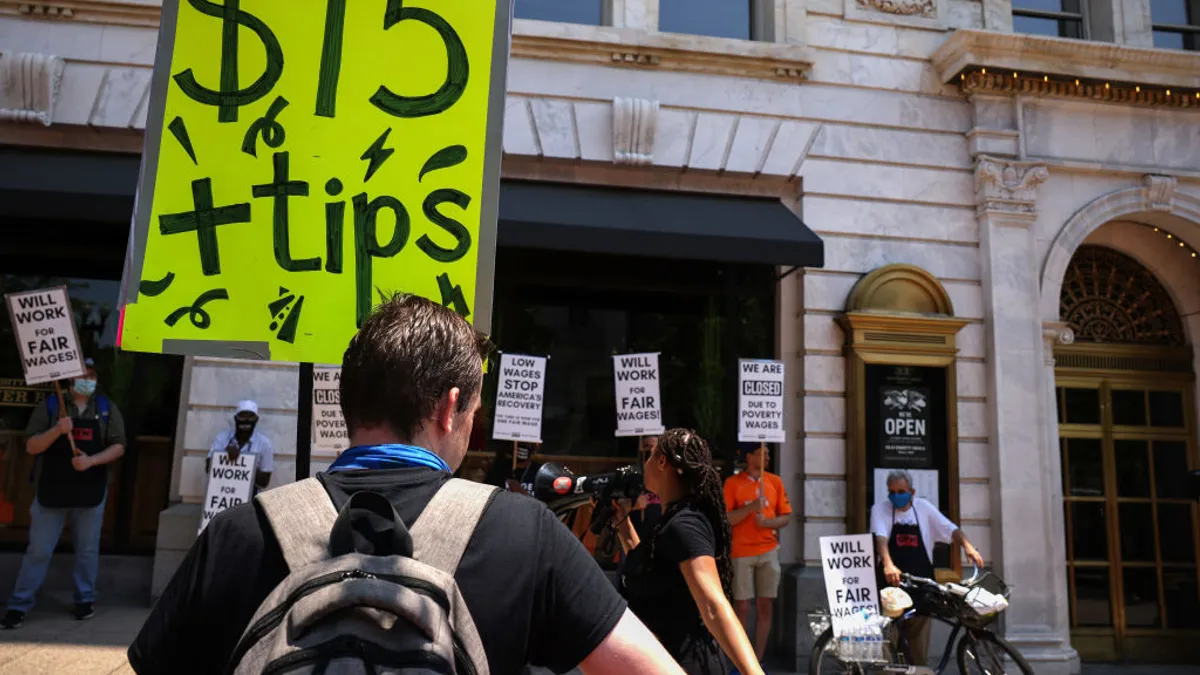Dive Brief:
- The pace of growth in worker compensation slowed during the fourth quarter, the Labor Department reported Tuesday, as Federal Reserve policymakers began a two-day meeting that is expected to conclude with an inflation-targeting, quarter-point increase in the federal funds rate.
- Wages and benefits rose 1% during the October through December period compared with gains of 1.2% in the third quarter and 1.4% in the first quarter of 2022, according to the Labor Department.
- The Employment Cost Index data reinforce other recent signs of disinflation, and may signal that the threat of a wage-price spiral is fading. The Fed’s preferred inflation gauge — the core personal consumption expenditures price index — fell to 4.4% in the year through December from an annual pace of 5.2% in September.
Dive Insight:
Fed officials have pledged not to halt the most aggressive monetary tightening in 40 years until they see a sustained decline in inflation. Several policymakers have repeatedly said that the central bank erred when combating inflation during the 1970s by reducing borrowing costs too early and triggering a resurgence in price pressures.
“Wages do not appear to be driving inflation in a 1970s-style wage–price spiral,” Fed Vice Chair Lael Brainard said in a Jan. 19 speech. Noting “tentative signs that wage growth is moderating,” Brainard said, “I will be watching to see whether the employment cost index data at the end of this month show the deceleration from the third quarter continuing into the fourth quarter.”
At the same time, Brainard echoed Fed Chair Jerome Powell and other policymakers by saying “we still have a considerable way to go toward our 2% inflation goal, and I expect to support continued tightening of monetary policy.”
Wage pressures have eased even as the labor market remains unusually tight, with roughly 1.7 openings available for every job seeker in November and the unemployment rate falling in December to 3.5%, a 50-year low.
Several companies seeking to attract or retain workers have announced wage increases in recent months.
Delta Air Lines has built in an increase in labor costs for coming months as it completes contract negotiations with its pilots, CEO Ed Bastian said in a Jan. 13 earnings call with analysts. Walmart said last week that it plans to increase the minimum wage for hourly employees to $14 from $12.
McDonald’s is facing harsh “macro-economic pressures,” including labor costs, that will probably set back its short-term performance, CFO Ian Borden told analysts Tuesday during the company’s fourth-quarter earnings call.
“With significant inflationary headwinds across commodities, labor and utilities, our company-operated margin percent will be hampered in the near term,” he said.
At United Parcel Service, higher wages and benefits pushed up expenses by 1.5 percentage points during the recent quarter, CFO Brian Newman said Tuesday during the company’s fourth quarter earnings call.
“Total union wage rates were up 5.6% in the fourth quarter, driven by the annual wage increase and cost of living adjustment for our Teamster employees that went into effect in August of 2022,” he said.
“We expect 2023 to be a bumpy year, due to rising interest rates, decades high inflation, recession forecasts, a war in Eastern Europe, COVID disruptions in China, and our U.S. labor negotiations,” Newman said.
The Fed raised the benchmark rate 4.25 percentage points last year in an effort to push down inflation to their 2% goal. Policymakers increased the main interest rate by 0.75 percentage point at four consecutive meetings before trimming to a 0.5 percentage point hike in December.














